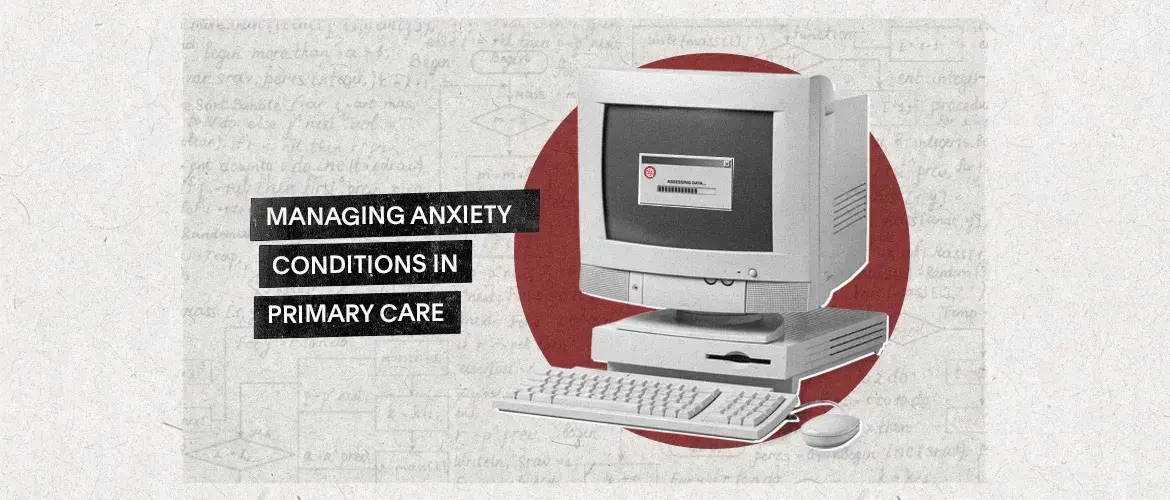Anxiety disorders are the most common psychiatric disorder seen in primary care, yet evidence suggests that they are under-recognized and under-treated. During an oral presentation titled ‘Managing Anxiety Conditions in Primary Care: Using the Ottawa Anxiety Algorithm,’ Dr. Douglas Green, a psychiatrist at the Ottawa Hospital, showcased a practical point of care algorithm developed by the Ottawa Hospital designed to help primary care practitioners optimize the assessment, diagnosis, and management of patients with anxiety disorders.
Anxiety disorders have an annual prevalence of up to 18%, which is higher even than depression.1 Anxiety disorders are associated with substantial personal and societal burden including high rates of functional impairment and healthcare utilization, reduced work productivity, and increased risk of suicide.1 Despite their high prevalence and burden, it is estimated that about 40% of patients with diagnosed anxiety disorders are untreated1 and among those who receive appropriate pharmacotherapy, only one-quarter receive a minimally adequate dose and/or duration of therapy.2
4 in 10 patients with an anxiety disorder are untreated
According to Dr. Green, there are myriad factors contributing to the under-recognition and under-treatment of anxiety disorders in primary care including the time required to establish a correct diagnosis, patient denial and/or inability to distinguish anxiety from somatic symptoms, stigma, and presence of other psychiatric comorbidities including other anxiety and mood disorders. The Diagnostic and Statistical Manual of Mental Disorders (DSM) recognizes six major types of anxiety disorders: generalized anxiety, phobias, panic disorder, social anxiety disorder, obsessive-compulsive disorder and post-traumatic stress disorder, and separation anxiety disorder.3 Importantly, anxiety is a symptom that is common to all anxiety disorders, and making the correct diagnosis is paramount to selecting the most appropriate treatment strategy.
Given the high prevalence of anxiety disorders in primary care and the gaps in optimal patient management, there is a need for effective strategies to identify and treat these patients. The Ottawa Anxiety Algorithm was developed to address this unmet need.
The Ottawa Anxiety Algorithm is a free point of care tool for the management of adults with anxiety
The Ottawa Anxiety Algorithm is a free, online, comprehensive tool to assist primary care providers in all aspects of anxiety disorder assessment, diagnosis, and treatment (available at https://ottawaanxietyalgorithm.ca/en/start). It was founded on two evidence-based models of care, the chronic care model and stepped care model. Dr. Green demonstrated how to navigate the various aspects of the tool including instructional videos and supportive content on screening, diagnosis, differential diagnosis, pharmacological and non-pharmacological treatment, multicultural patient resources, and recommendations for follow-up and referral.
Links to validated screening tools (e.g, GAD-7, etc) are embedded in the online algorithm
One of the most practical elements of the Ottawa Anxiety Algorithm is a hyperlinked table of commonly prescribed and guideline-recommended antidepressant medications that are used for the treatment of anxiety disorders. The table includes guidance on appropriate dosing (i.e., initial, target, and maximal doses), potential side effects, and hyperlinks to individual algorithms for each medication that outline critical decision points related to dose titration and optimization, monitoring, and augmentation strategies for each anxiety disorder. There are also links to resources on how to choose an initial anxiolytic medication, considerations for switching or augmenting in situations where response is inadequate, a drug interactions checker, and protocols for switching psychotropic medications.
A similar algorithm focused on the primary care management of depression, the Ottawa Depression Algorithm, is available at https://ottawadepressionalgorithm.ca/en/start. Like the Ottawa Anxiety Algorithm, the depression algorithm is an easy to use tool that can be used to assist in the management of depression at the point of care.
Our correspondent’s highlights from the symposium are meant as a fair representation of the scientific content presented. The views and opinions expressed on this page do not necessarily reflect those of Lundbeck.




